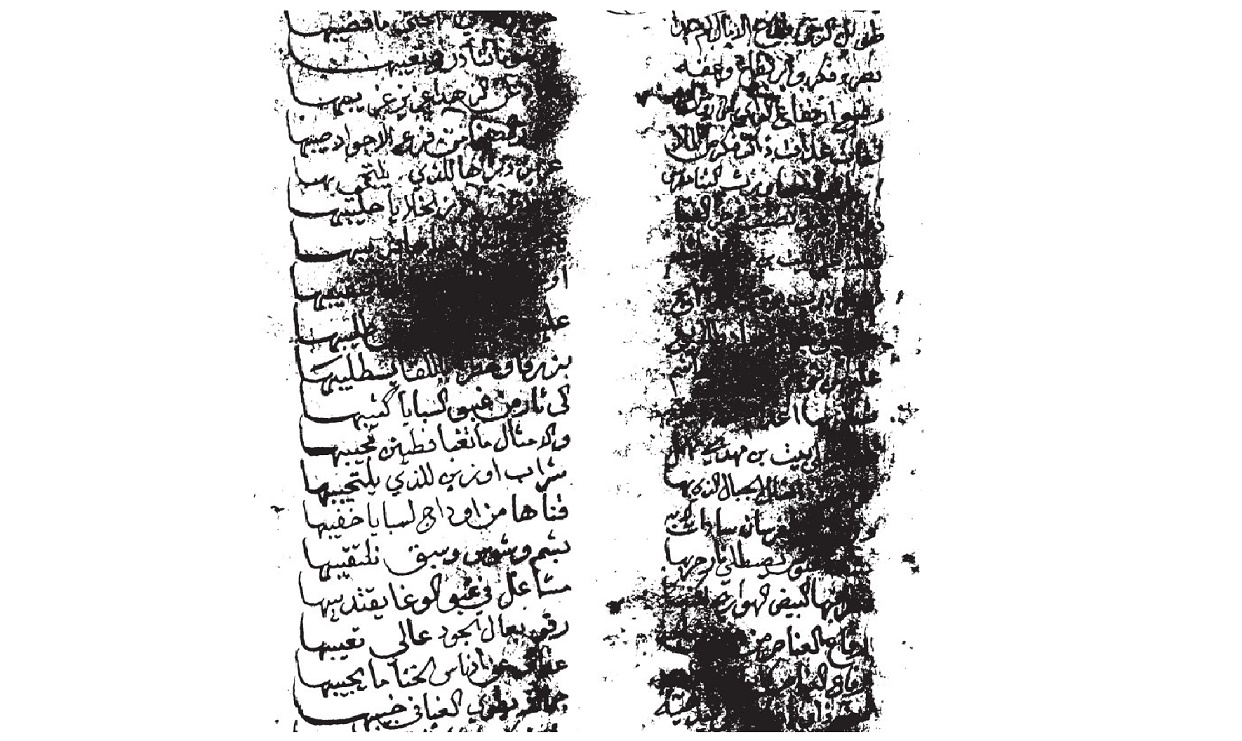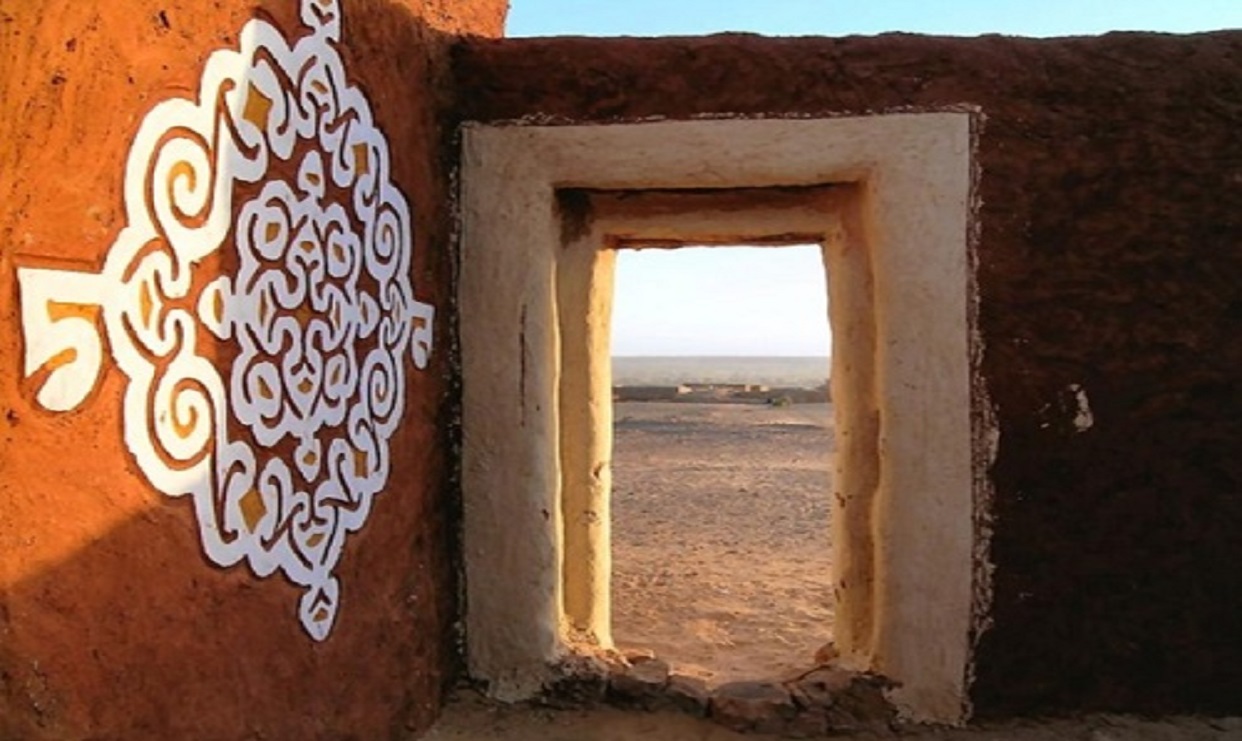1,306 عدد المشاهدات
Jamal Bin Huwaireb
Kiswa or Kuswa means clothing where the plural form is Kusa.
The covering of Kaaba before Islam
Al-Waqidi narrated a Prophetic hadith (saying) attributed to Abu Hurayrah that Prophet Muhammad (PBUH) forbade insulting As’ad Al-Hemiari (Tubba), saying: “He was the first to drape the Holy Kaaba”. This hadith was undermined by Islamic scholars for it was narrated only by Al-Waqidi, however we can deduce that the Kiswa in the time of Ignorance (the pre- Islamic period) came from Yemen.
In his work Al-Maghāzī, Muḥammad ibn Isḥāq says: “I have heard from several scholars that Tubba (As’ad Al-Hemiari) was the first to fully cover the Ka’ba. Tubba saw in his dream that he was covering the Ka’ba, thus he covered it with Antaa (wrap of leather). Then he saw in his dream that he was covering it, thus he covered it in openable Wasaeel (Yemeni striped covers)”. From this quotation we can figure out the materials used for Kiswa in those days; it was draped with a covering of leather, thereafter, in Yemeni striped clothes.
The Kiswa in Islam
Prophet Muhammad (PBUH) and his successor Abu Bakr (may Allah be pleased with him) draped Kiswa on Ka’ba. When Egypt was conquered in the reign of Omar, Omar, and the Caliphs who succeeded him, covered Kaaba with Copati, clothing attributed to the Copts. It is said that Muawiya (may Allaah be pleased with him) used to covered it in two wraps: Deebaj (silk garment) in Ashura (the Tenth of Muharram) and Copati at the end of Ramadan. Copati , a soft white dress, is the plural form of Coptyah in Arabic.
It is said that Al-Ma’mun used to cover Kaaba three times a year, in red silk on Yawm al-Tarwiyah (the Day of Quenching Thirst) (8th of Dhul Hijjah), in copati on the 1st day of Rajab, and in white silk on the 27th of Ramadan.
Some accounts mention that the covering of Kaaba was white during the period of the Righteous Caliphs, the Umayyads and the Abbasids. So who was the first to cover it in black?
Abbasid Caliph Al-Nasir (died in 622 H) was the first to cover Kaaba in black. He first covered it with green covering and then shifted it into a black one, and this tradition is still ongoing from that period.In 751 H, Sultan of Egypt As-Salih Isma’il, son of an-Nasir Muhammad ibn Qalawun, allocated an annual consecration for the outer covering of Kaaba, in addition to a red inner covering and a green one for the Holy Chamber every five years.Ibn Ad-Dyaa (died 854 H), describes Kiswa as follows:
(The covering of Kaaba is now made up of black silk, and has a white linen liner. The Kiswa is a pattern wrapped around Kaaba, which stands around 20 cubits above the ground, the cover width is almost 2 cubits. It is embroidered on one side with Quranic verses starting with Basmalah followed by verses 96 & 97 of Al Imran Sura: “Indeed, the first House [of worship] established for mankind was that at Makkah …” finishing with “…indeed, Allah is free from need of the worlds”. Between the Yamani Corners, after Basmalah the embroidery reads the verse 97 of Al Maaida Sura “Allah has made the Ka’bah, the Sacred House … Allah is Knowing of all things”
Between the Yamani Corner and the Western Corner, verses 127 & 128 of Al Baqara Sura are embroidered. Between the Yamani Corner and the Syrian Corner the embroidery reads “the poor slave (to God) Sultan Qalawun ordered to make this holy Kiswa “.)
Some princes forced the Sharifs of Makkah to use their Kiswa only as Sultan Qalawun of Egypt did. Al-Maqrizi mentioned in his work in 754 H: ” In Shaaban: Sharif Abu Nemi, the Emir of Mecca, swore to the Sultan and his son to obey them, pledging to drape only the Kiswa coming from Egypt on Kaaba in each season. Sultan Qalawun also ordered Abu Nemi to protect and assist the pilgrims and facilitate their pilgrimage”. The Ottomans took over this task from Egyptians, and thereafter Muhammad Ali Pasha king of Egypt took it over again. Kiswa manufacture was almost limited to Egypt; Muhammad Ali’s kiswa was green and used to be delivered by the Egyptian Caravan (Al Mahmal), as did the kings of Egypt who preceded him. It used to be made by workers who learned from old kiswa weavers, in the camel traders souq, which I visited myself, before a factory was set up at Makkah by Late King Abdul Aziz, may Allah have mercy on him, to make kiswa . I may dedicate an article about the Caravan in the coming issues.





